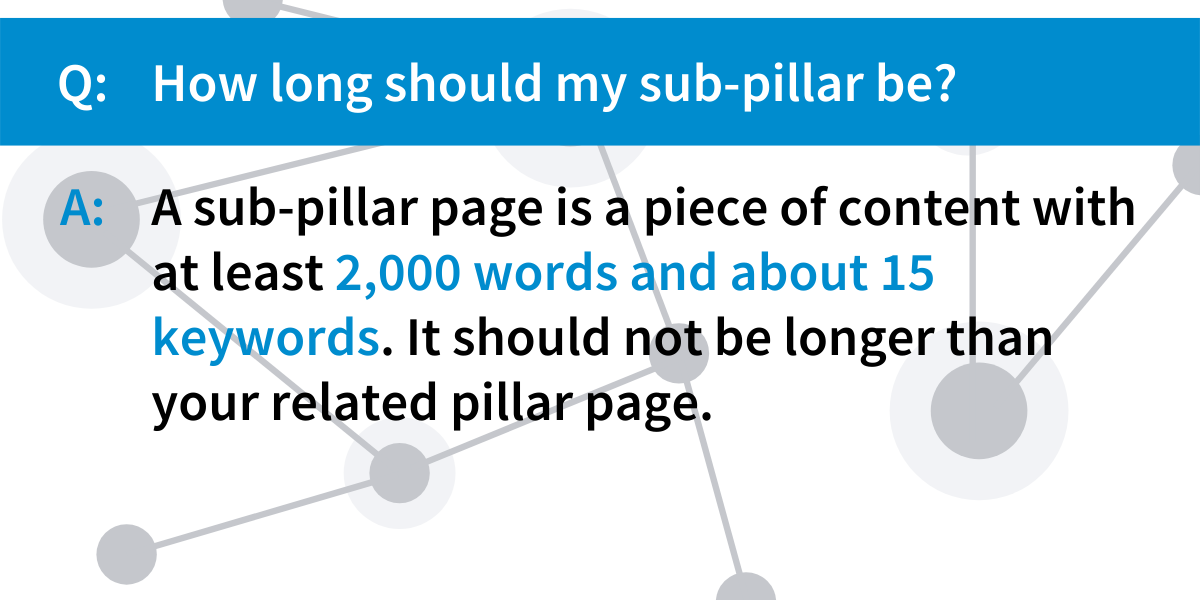What Is a PBM Strategy?
June 14, 2022 •McKenzi Sidor

You may have heard of account-based marketing (ABM), but have you heard of Pillar-Based Marketing (PBM)? It is a new marketing strategy that has a similar premise to ABM but expands it further. Whereas account-based marketing aims to win certain individuals over as customers, Pillar-Based Marketing aims to win groups of people over. Target groups instead of individuals, and you boost website traffic, generating more leads.
Are you wondering how to implement a PBM strategy? Have no fear. This blog will cover what exactly a Pillar-Based Marketing strategy is, what a PBM strategy template looks like, and (surprise!) the secret tool and courses you need to effectively use this strategy. Let’s start with the basics.
What Is PBM?
As we previously mentioned, Pillar-Based Marketing is a marketing strategy that targets groups of people instead of individuals. It’s more than that, though. It also puts content at the center of your marketing plan. The goal of PBM is to write content that your target audience will want to read. How do you do that? On top of good ole writing skills, you will also have to use the keywords and questions that your target audience uses.
No, we don’t mean doing the same thing as marketers did in the early SEO days. Do not blast a cannon of keywords at your content, breaking up the flow trying to appeal to search algorithm analytics. That strategy doesn’t work anymore and, frankly, doesn’t make for good content. Instead, you have to figure out what questions your audience is asking and how they’re asking them. Find what words they are searching for. Include these keywords in your content so that when people search for those terms, your content pops up in the results.
By using your keywords effectively, you increase your odds of getting onto the first page of search results on search engines. Why is that so important? Because 92% of organic traffic only browses the first page of Google search results. Get onto the first page of Google, and you increase the odds of your audience clicking on and visiting your website.
How Do You Create a PBM Strategy?
If you want to create a Pillar-Based Marketing strategy, you need a few key elements. They are:
- Pillar Pages
- Sub-Pillar Pages
- Supporting Blogs
- Keywords
- Call to Action (CTA)
Below we dive further into what each is and how it fits into the PBM strategy.
Pillar Page
A pillar page is a piece of content with at least 3,000 words and about 20 keywords. The title should be a short-tail keyword (usually 2-3 words) about a broad topic that your business specializes in. For example, if your business sells party decorations, you might write a pillar on balloons. From there, you should give a general overview about the topic. For our example, you might discuss the history of balloons at parties, what balloons are made of, and common events you might see balloons at.
Your pillar page is the main authority of your PBM strategy. All of the sub-pillar pages and supporting blogs related to it should link back to your pillar page to establish it as such on search engines. Your pillar page shouldn’t link to your sub-pillar pages or supporting blogs.
To help set up your pillar page as an authority even further, wait to publish it until you’re ready to publish your related sub-pillar pages and supporting blogs. If you post the entire pillar all at once, you’ll have more fresh content linking to your pillar page, which will catch the interest of search engine algorithms.

Sub-Pillar Page
A sub-pillar page is a piece of content with at least 2,000 words and about 15 keywords. It should not be longer than your related pillar page. The only content within your pillar plan that it should link back to is your pillar page, not your supporting blogs. The topics of these pages will be slightly more specific than your pillar page.
To keep with our balloon example, you might write a sub-pillar on birthday balloons and another one about helium balloons. You should have at least three sub-pillar pages for each pillar page you create.
Supporting Blogs
A supporting blog is a piece of content with at least 750 words and about 8 keywords. It should not be longer than your related sub-pillar page and should link to both your pillar page and related sub-pillar page. The titles should be a long-tail keyword, usually a question.
For our balloon example, a supporting blog post might be titled “What are the three types of balloons?” or “How much do balloons normally cost?” You should have at least 12 blogs for each pillar page you write.
Keywords
As we previously mentioned, keywords are the phrases and questions that your target audience is searching for. How do you figure out which keywords to use? The difficult way to do it is to choose a topic, search for it on Google, and then look at the related searches and “People also ask” section. What you find there can then become your keywords.
The easier method of finding keywords is to use DemandJump. Our platform does the searching for you so you know what to write about and which keywords to include in each piece of content. All you have to do is type in your topic. Talk about easy!

Call to Action (CTA)
Each piece of content you write should include some sort of CTA. This could be anything like encouraging the reader to visit your website, request a demo, or start shopping. These are important to have because it encourages your audience to interact with your content, to take action. From there, you can generate traffic to your website and, hopefully, generate leads. Note that, for your CTA to work, you have to have quality content before it. If your content isn’t relevant or engaging, your audience might not even make it to your call to action, let alone be persuaded by it.
What Is a PBM Platform? DemandJump!
If you want to use a platform to create your PBM strategy, use DemandJump! We created PBM, so we know what we’re talking about. We take the guesswork out of picking keywords and even show you which keywords are ranking highest as well as where you and your competitors are ranking for each keyword. Then, once you create your content, our Cross-Channel Analytics will show you what content you create is generating traffic.
Want to become certified in Pillar-Based Marketing? We offer that, too! Through DemandJump University, you’ll find the best Pillar-Based Marketing courses around and can even get certified in each topic for free! Ready to start using a marketing strategy that will give you real results? Make it a breeze by using DemandJump.
Featured Articles
Categories
- Attribution Tracking (13)
- Channel Optimization (11)
- Consumer Insights (68)
- Content Marketing (251)
- Data Science (8)
- Digital Marketing (6)
- Digital Transformation (26)
- Enterprise (10)
- Lead Generation (14)
- Market Intelligence (8)
- Marketing Analytics (39)
- Marketing Attribution (57)
- Marketing Management (153)
- Marketing Operations (86)
- Organic Search (222)
- Paid Search (52)
- Pillar-Based Marketing (63)
- Programmatic Advertising (9)
- SaaS Content (14)
- SaaS Marketing (29)
- Search Marketing (111)
- SEO Keyword Research (28)
- SEO Pillar (18)
- SEO Strategy (46)
- SMB (5)
- Website Content (12)


